How to Prevent Lower Back Pain
Posted by Dr. Mercola M.D.| March 30 2010 |
Back pain affects about 8 out of 10 people. But there are many steps you can take to avoid it. One of the best things you can do to prevent back pain is to exercise regularly and keep your back and abdominal muscles strong.
Here are some quick pointers to prevent back problems:
Always stretch before any strenuous physical activity (in fact it would be wise to engage in a regular stretching program like active isolated stretching, which is what I use every day)
Don't slouch when standing or sitting
Sit in chairs or car seats with good lumbar support
Switch sitting positions often and periodically walk around or gently stretch muscles to relieve tension
Don't bend over without supporting your back
Wear comfortable, low-heeled shoes
Sleep on your side to reduce any curve in your spine, and always sleep on a firm surface
Lift with your legs, keeping your back straight
Try to control your weight
If you smoke, quit; smoking reduces blood flow to the lower spine and causes the spinal discs to degenerate
Also, to keep your spine strong, as with all bones, you need to get enough vitamin D every day.
Sources:
Live Science March 16, 2010
Dr. Mercola's Comments:
According to statistics from the American Chiropractic Association (ACA), approximately 31 million Americans experience low-back pain at any given time. Fifty percent of all working adults say they have back pain, and it's one of the most common reasons for missed work.
The ACA also estimates that Americans spend at least $50 billion annually on back pain treatments!
So what causes back pain?
Naturally, accidents and sports injuries can be the cause of the pain, but a number of other factors can contribute to back pain, including:
Poor posture
Obesity
Poor physical conditioning facilitated by inactivity.
Psychological/emotional stress
Internal disease, such as kidney stones, infections, blood clots
Osteoporosis (bone loss)
Here we'll take a look at several all natural, non-drug, non-surgical remedies for this common problem.
Pain in the Back? Look to the Front!
Many people fail to realize that many times the pain actually originates from the opposite side of where it hurts.
For example, the very act of sitting for long periods of time ends up shortening the iliopsoas muscles that connect from your lumbar region to the top of your femur, at the front.
When these muscles are shortened, it can cause severe pain when you stand up as they will effectively pull your lower back (lumbar) forward. Many people end up going through drastic medical procedures to "fix" this type of pain, or end up taking pain killers for extended periods of time, when in fact it can be easily remedied by massaging the iliopsoas muscle to release it.
(Please note that this type of massage should ONLY be done by a qualified massage therapist, as your vena cava - a large diameter vein - runs nearby. In rare instances, if a person is prone to aneurisms, pushing on the vena cava could cause an aneurism. This massage technique is a deep one, but should be done gently.)
You can also use mild stretching to counteract the shortening of your iliopsoas, especially if you sit for long periods of time every day.
Likewise, having firm abdominal muscles is like having a built-in internal corset that not only holds your gut in, but also stabilizes your spine, vertebrae and discs. Many can completely eliminate their back pain simply by developing stronger abdominal muscles.
Chiropractic as a First Line of Defense for Acute Back Pain
Seeing a qualified chiropractor is certainly a wise option if you suffer from back pain. I am an avid believer in the chiropractic philosophy, which places a strong emphasis on your body's innate healing wisdom and far less reliance on band-aids like drugs and surgery.
Chiropractic, osteopathic, and naturopathic physicians receive extensive training in the management of musculoskeletal disorders during their course of graduate healthcare training, which typically lasts from 4-6 years.
Due to their comprehensive training in musculoskeletal management, numerous sources of evidence have shown that chiropractic management is much safer, and less expensive, than allopathic medical treatments, particularly for low-back pain.
One such study, published in 1993, found that chiropractic management of low-back pain is superior to allopathic medical management in terms of safety, effectiveness, and cost, concluding:
"There would be highly significant cost savings if more management of LBP (low-back pain) was transferred from medical physicians to chiropractors."
In addition, researchers have also found that chiropractic adjustments affect the chemistry of biological processes on a cellular level!
What that means is that chiropractic care can affect the basic physiological processes that influence oxidative stress and DNA repair, so in addition to addressing any immediate spinal misalignment that might cause pain, it can also address deeper dysfunction in your body.
Many people do not realize that there's a whole lot more to chiropractic care than just pushing bones into place. In fact, "vitalism" is a basic foundation of chiropractic philosophy. It's the recognition that your body has an intrinsic, innate life force that guides and directs your body's healing process.
I previously published an article on this topic, written by Dr. Ben Lerner, the chiropractor who developed The Center for Maximized Living, and I encourage you to read through it for more information.
But getting back to back pain specifically, a paper published in the Annals of Internal Medicine in 2007 titled Diagnosis and Treatment of Low Back Pain: A Joint Clinical Practice Guideline from the American College of Physicians and the American Pain Society concluded the only recommendation for active treatment of acute low back pain in people who do not improve with other self-care options is spinal adjustment.
For chronic or subacute low back pain, they recommend using "intensive interdisciplinary rehabilitation, exercise therapy, acupuncture, massage therapy, spinal manipulation, yoga, cognitive-behavioral therapy, or progressive relaxation."
